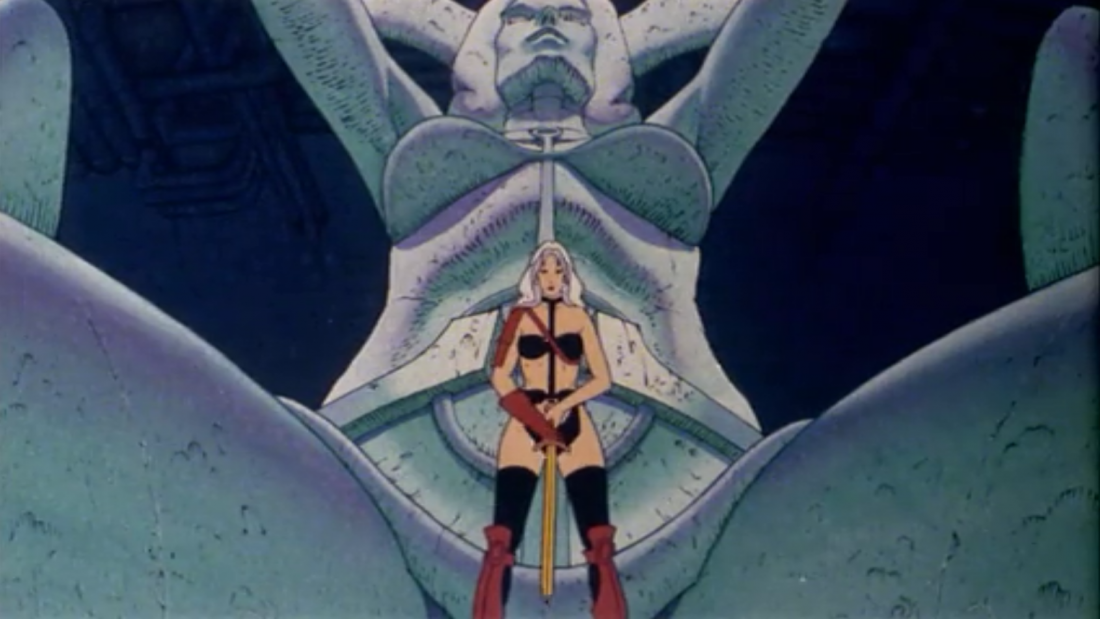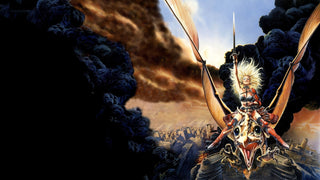The movie Heavy Metal is like a psychedelic dive into the perverted mind of a twelve-year-old boy. It’s mostly boobs, rock and roll, boobs, zombies, violence, and boobs. So why on earth do I love it?

This animated film based on the comic magazine of the same name made an indelible impression on an entire generation of men. For context: This Canadian-American sci-fi cartoon classic was produced by Ivan Reitman (who had just made National Lampoon’s Animal House), written by Len Blum and Daniel Goldberg (who were working on Stripes, concurrently), and featured voice acting by SCTV legends John Candy, Eugene Levy, Harold Ramis, and Joe Flaherty. It’s 1981, almost ten years after Fritz the Cat, ten years before third wave feminism, and smack dab in the middle of Porky’s and Revenge of the Nerds mania. This isn’t an attempt to shatter anyone’s nostalgia, but be forewarned, it may get chipped along the way.
“Taarna’s the original metal warrior princess. When you have a broadsword, nobody tells you to smile.”
Let’s just get this part out of the way. In 1985, a cartoonist named Alison Bechdel created a test with only three questions: 1) Are there at least two women in the film who have names? 2) Do those women talk to each other? And 3) Do they talk to each other about something other than a man? Heavy Metal does get credit for giving some of the women names before they take off their clothes and plead for or demand sex, but the female characters are one-dimensional sex objects with very little sexual agency, prizes to be won and, subsequently, subjected to violence and, often, death.
What some consider to be the most feminist character in the film, Taarna, comes in the final scene, but is really just another exploitative male fantasy. She represents the ass-kicking Madonna complex. Taarna doesn’t speak and she doesn’t sleep with anyone, but she does wear a bondage-style uniform and gets tied up and whipped. A heroine, no doubt, but in order to avenge a nation of people and destroy all evil, she must give her own life. What better epitomizes man’s expectations of women than self-sacrifice?
What she lacks in clothing she makes up for in courage. Alexa de Campi, a comics writer who has picked up the Taarna story where it left off in Heavy Metal, said it best, “Taarna’s the original metal warrior princess. When you have a broadsword, nobody tells you to smile.” She sees Taarna, in all her complexity, as synchronous with the modern female experience. “In the absence of being able to carry around broadswords,” she says, “I’m all down for cool urban fashion armor for all the badass warrior women out there just trying to make it through the day, surrounded on all sides by barbarians.”
It’s an accidental masterpiece and a reluctant classic. Though the movie has all the elements of a bad one, it is somehow the best.
Somehow, most fans of Heavy Metal seem to be aware of how problematic the film is and certainly understand that a movie like this would never come out today. The ridiculousness of the objectification of women and the ludicrous male wish-fulfillment is part of what makes it such a beloved gem. For any viewer not going through puberty, the movie is hilarious. The early technology (or lack thereof) in animation endears the viewer and the copyright nightmare soundtrack features Black Sabbath, DEVO, Stevie Nicks, and others. It’s a time capsule of pre-Reagan era perversity and wildness that shouldn’t be tampered with.
And even though the female characters are blank slates to project one’s fantasies onto, so is everything else. The men range from schlubby anti-hero to virgin nerd turned well-endowed-hulk-sex-god. A green, glowing orb (called the Loc-Nar) acts as a framing device; a framing device with dubious symbolic meaning, but you can feel free to attach whatever meaning you see fit. The makers of the film admitted that the Loc-Nar was the only way they could piece together the nine scenes animated by nine different artists (apparently in an effort to expedite the movie), but this raw stitching together of scenes may have made Heavy Metal an unintentional stoner movie. The tone is unpredictable from artist to artist, never allowing for boredom.

It’s an accidental masterpiece and a reluctant classic. Though the movie has all the elements of a bad one, it is somehow the best. Most importantly, you can’t think too hard about anything in Heavy Metal; not the misogyny, not the non-sequiturs, not the outdated technology, and certainly not the storyline. Its naïveté is what excuses its misgivings, and its over-sexualized, farcical experiment in virility is what makes Heavy Metal a “power [that] infests all times, all galaxies, all dimensions.” So why on earth do I love it? The answer is complicated and keeps changing as I do. Only Heavy Metal, thank God, understands that there is nothing in this world less complicated than boobs.
***

